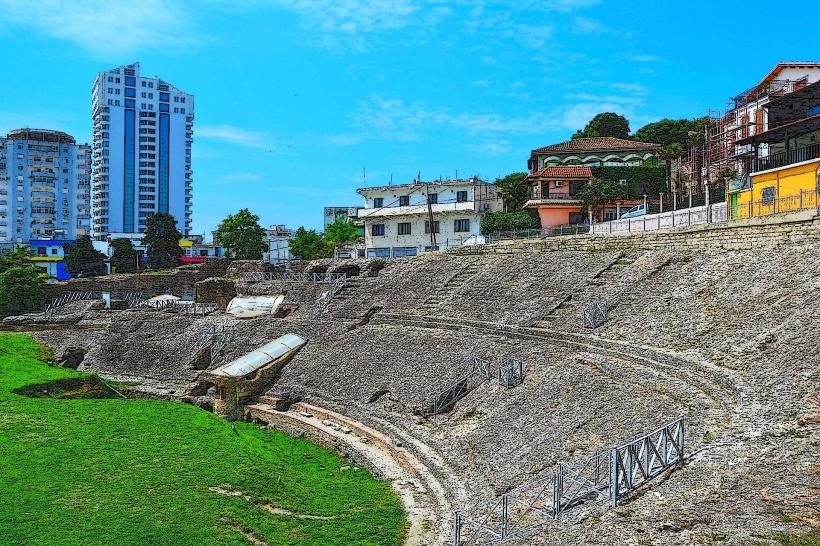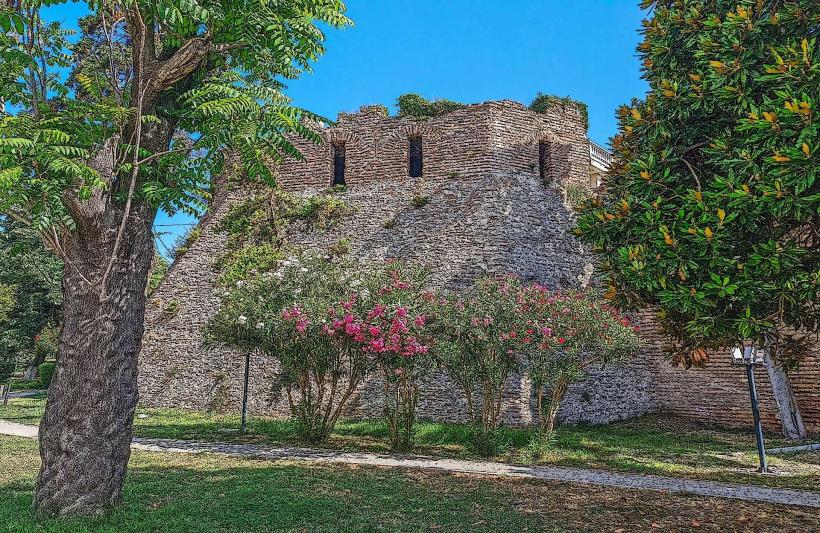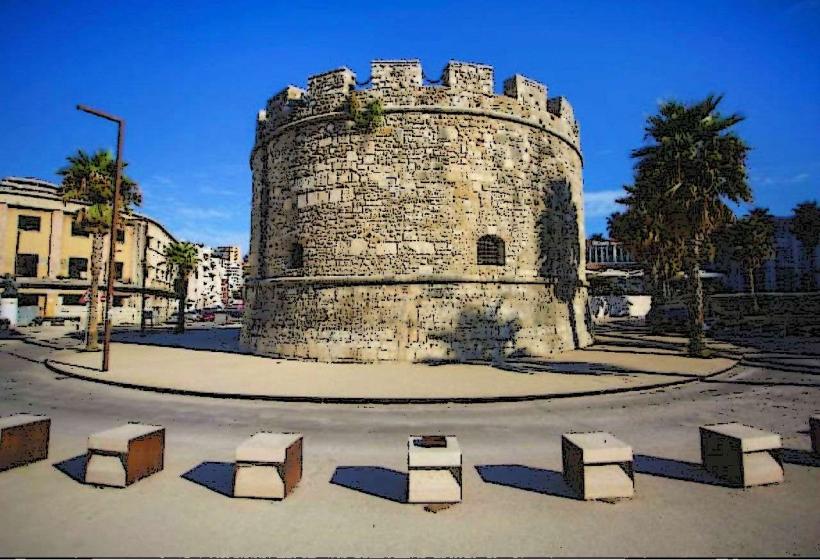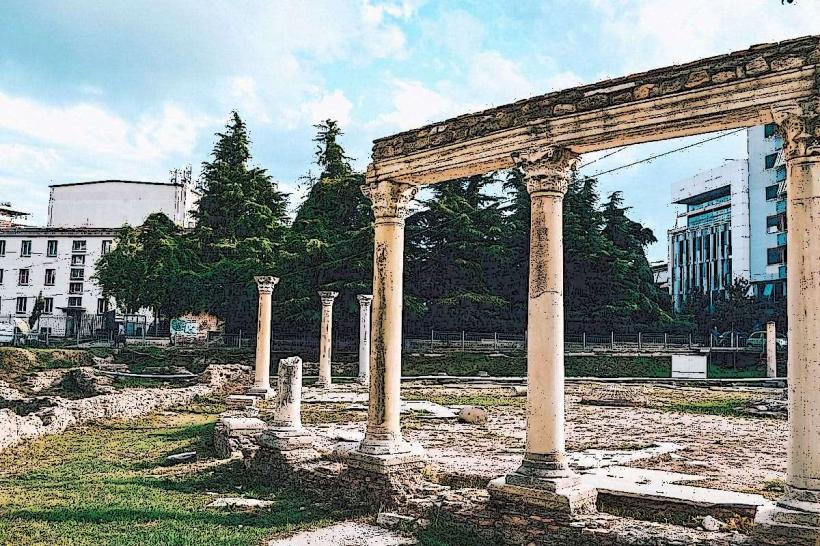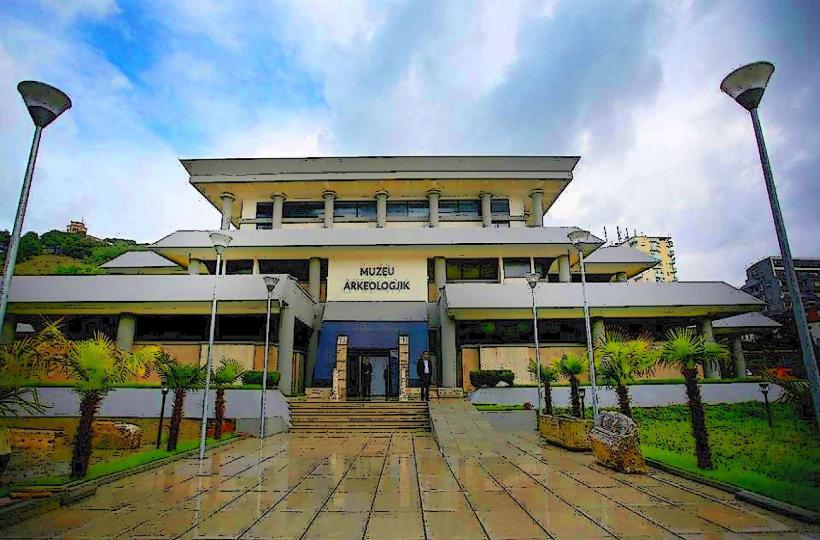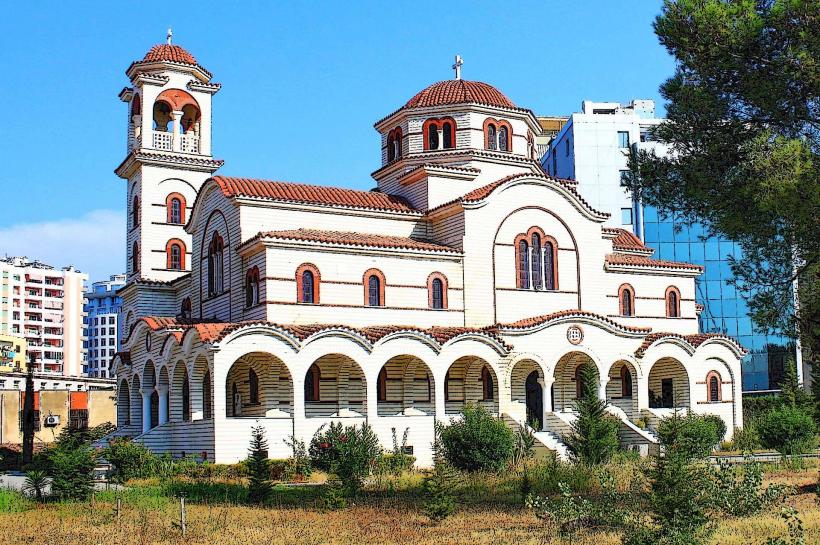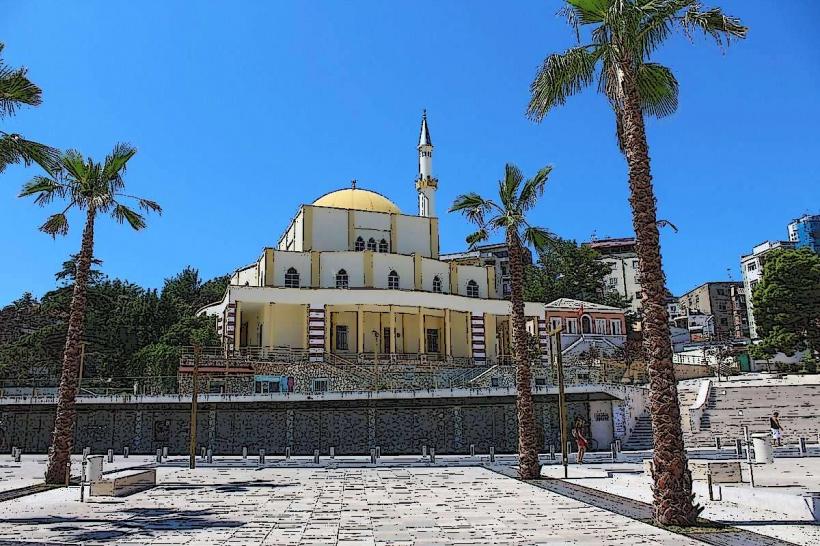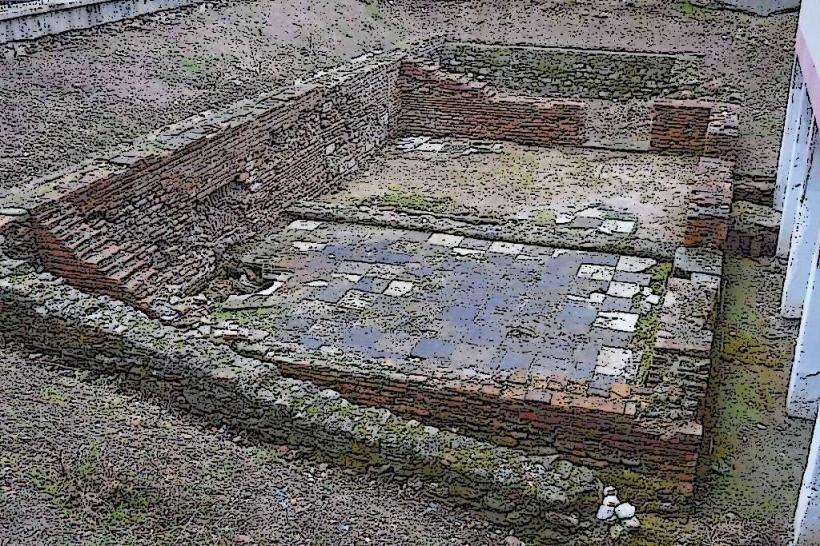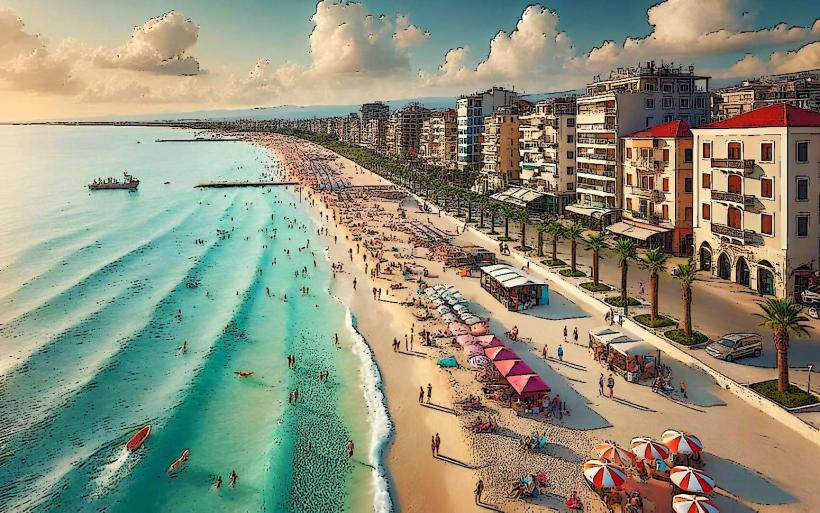Information
Landmark: Villa of King ZogCity: Durres
Country: Albania
Continent: Europe
The Villa of King Zog, also known as the Royal Villa of Durrës, is a historically significant residence located on a hill overlooking the coastal city of Durrës, Albania. This villa was a summer residence for King Zog I, the first and only king of Albania, who reigned from 1928 to 1939.
Historical Background
- Construction: The villa was built in 1937 under the orders of King Zog, during a time when Albania was undergoing modernization efforts. It served as a symbol of the monarchy’s vision of progress and European influence.
- Architectural Influence: Designed in a style blending Neoclassical and Rationalist architecture, the villa showcased both traditional Albanian elements and modern European aesthetics.
Architectural Features
Location and Design
- The villa is strategically situated on a hilltop, providing commanding views of the Adriatic Sea and the surrounding city of Durrës.
- Its elevated position reflects the monarchic tradition of building palatial residences in prominent locations.
Exterior
- The building has a simple yet imposing façade, characterized by clean lines and minimal ornamentation, reflecting the Rationalist style popular in the early 20th century.
- Large terraces and balconies were designed to maximize the panoramic views and connect the structure with its natural surroundings.
Interior
- The villa was richly furnished with European-style décor, including elegant chandeliers, luxurious carpets, and fine furniture.
- It featured multiple rooms for the royal family and their guests, as well as spaces for administrative and recreational purposes.
Historical Events
King Zog’s Use
- The villa served as a summer retreat for King Zog and his court. It was rarely used after his exile following the Italian invasion of Albania in 1939.
World War II
- During the Italian and later German occupations, the villa was repurposed by occupying forces as a strategic military post.
Communist Era
- Under the Communist regime (1945–1990), the villa was stripped of its royal symbolism and used for government functions and hosting state guests.
Post-Communist Era
- After the fall of communism, the villa fell into disrepair. Despite its historical significance, restoration efforts have been sporadic and incomplete.
Current Status
- Condition: The villa is currently in a neglected state, with parts of the structure showing signs of decay. However, it remains a site of cultural and historical interest.
- Tourism: Visitors can explore the exterior of the villa and its surroundings, but access to the interior is often restricted due to safety concerns and lack of maintenance.
- Cultural Significance: Efforts to restore and repurpose the villa as a historical museum or cultural center have been discussed but not fully realized.
Visiting the Villa
- Location: The villa is located on a hill within Durrës, offering stunning views of the city and the Adriatic coastline.
- Nearby Attractions: Visitors to the villa can also explore other historic sites in Durrës, such as the Roman Amphitheater, Venetian Tower, and Archaeological Museum.
Legacy of King Zog
The villa remains a poignant reminder of King Zog’s brief reign and his attempts to modernize Albania. Despite its current state, it holds potential as a restored landmark celebrating Albania’s royal past and architectural heritage.

